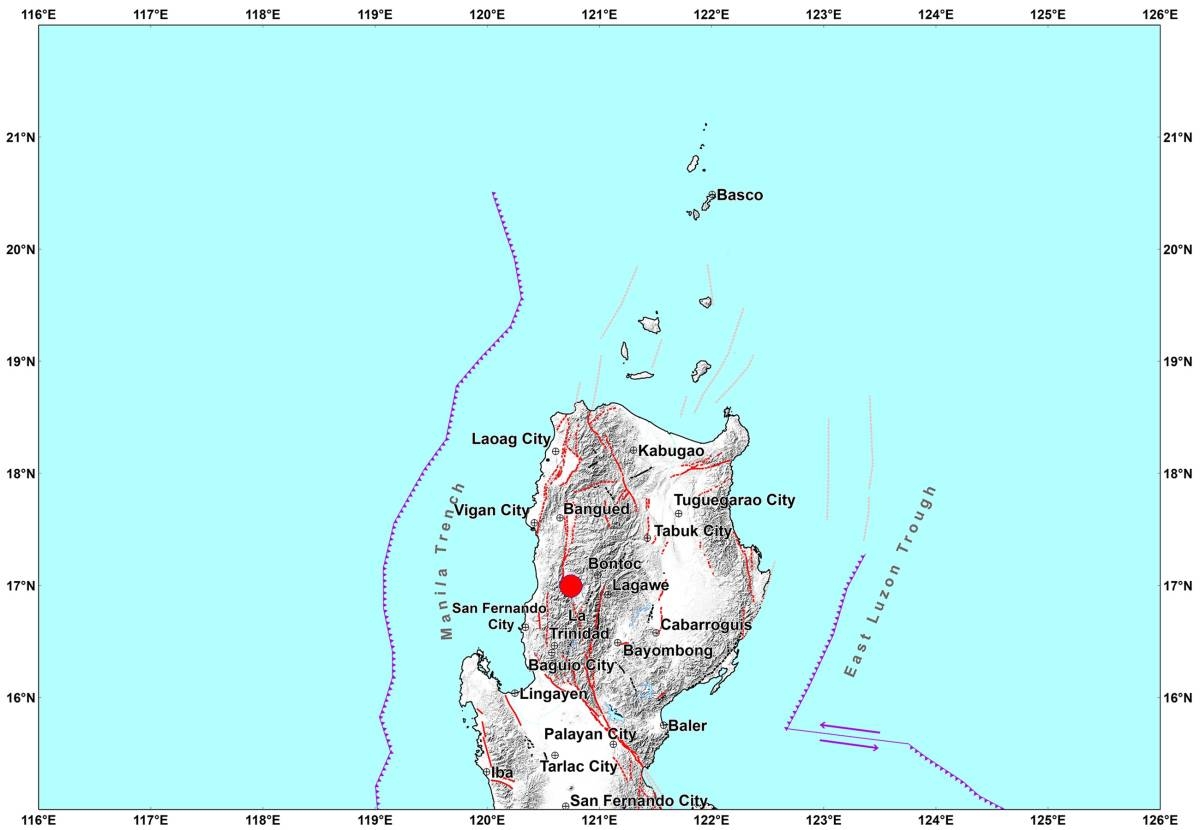In a recent report, the Philippine Institute of Volcanology and Seismology (Phivolcs) announced that a magnitude 4.7 earthquake occurred early Tuesday afternoon in Ilocos Sur, Philippines. The tremor, which originated from tectonic activity, took place around 12:20 p.m. approximately one kilometer southeast of the town of Cervantes in the same province.
According to Phivolcs, the earthquake had a depth of focus of four kilometers. While the occurrence of aftershocks is unlikely, Phivolcs Director Teresito “Toto” Bacolcol cautioned that there is a possibility of property damage.
The impact of the earthquake was felt across several areas, with different intensities reported in various towns and provinces. Residents in Tadian and Bauko in Mountain Province, Lamut in Ifugao, and Bayombong in Nueva Viscaya experienced an Intensity 4 shaking. Meanwhile, Banayoyo in Ilocos Sur, as well as Sagada, Bontoc, and Besao in Mountain Province, felt an Intensity 3 shaking.
Other areas, such as Villasis in Pangasinan, Lubuagan and Tinglayan in Kalinga, the City of San Fernando and Sudipen in La Union, Baguio City, La Trinidad, and Itogon in Benguet, experienced an Intensity 2 shaking. Lastly, Aringay and the City of San Fernando in La Union, as well as the City of Vigan in Ilocos Sur, reported an Instrumental Intensity 1 shaking.
It is important to note that earthquakes are a common occurrence in the Philippines due to its location along the Pacific Ring of Fire, an area known for its seismic activity. The country experiences numerous earthquakes each year, ranging in magnitude and impact.
In the event of an earthquake, it is crucial for residents to be prepared and aware of the necessary safety measures. This includes having an emergency kit with essential supplies, creating an emergency plan with family members, and knowing the designated safe areas in their community.
Local authorities and organizations like Phivolcs play a vital role in monitoring and providing timely information about earthquakes and other geological events. Their efforts help ensure the safety and well-being of the population.
It is also worth mentioning that each region may have its own local laws, customs, and emergency protocols when it comes to earthquakes. It is advisable for residents to familiarize themselves with these guidelines to better respond to such situations.
In conclusion, the recent magnitude 4.7 earthquake in Ilocos Sur serves as a reminder of the ongoing seismic activity in the Philippines. While the impact of this particular earthquake was felt in various areas, it is crucial for residents to stay informed, prepared, and vigilant in the face of potential natural disasters.







